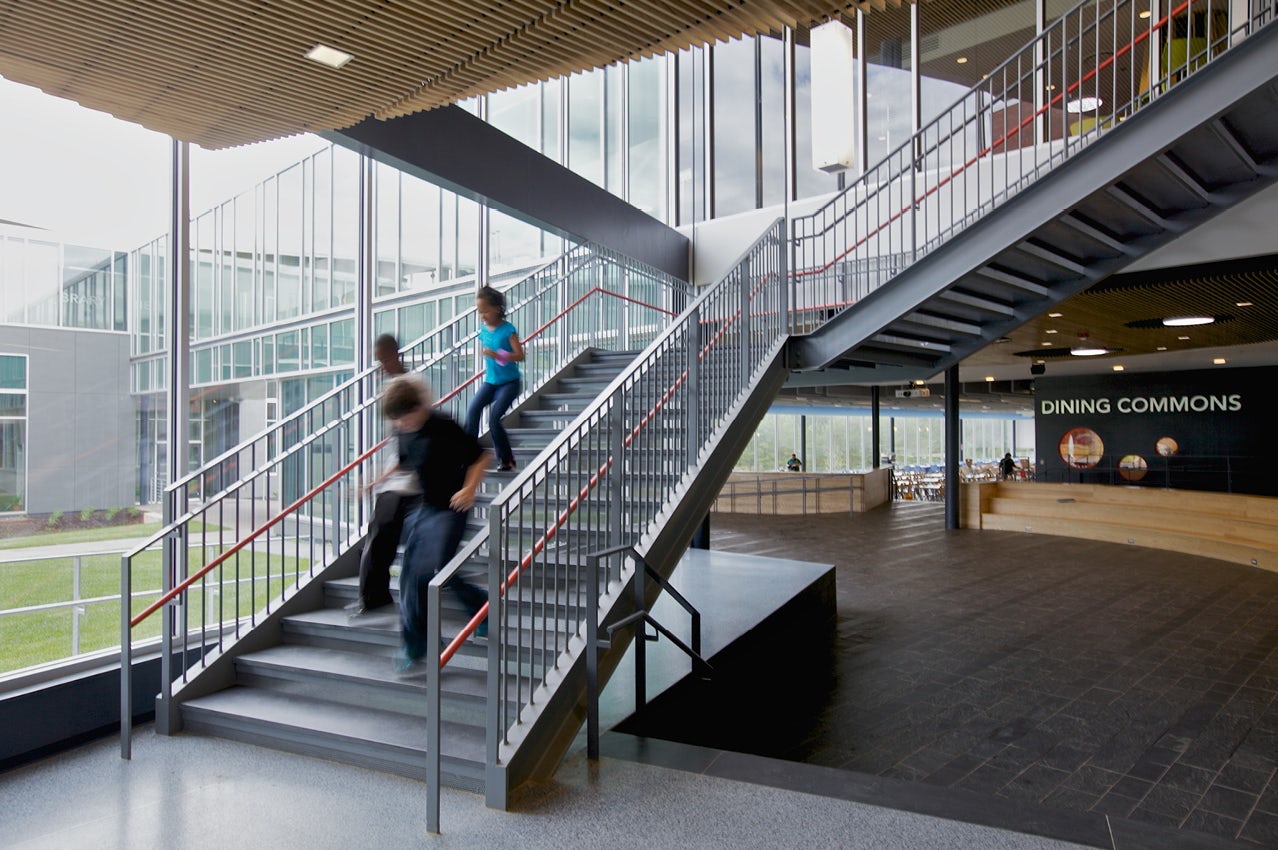This article was written by former Associate Dina Sorensen and originally published by the Center for Active Design.
Design that allows physical activity and movement to permeate school culture empowers kids with the choice of when and how they need to move – to learn. In 2010, a team of public health scientists and design practitioners began to engage in a multidisciplinary effort to formulate a platform that addresses the benefits of health-promoting learning environments. The resulting Physical Activity Design Guidelines for School Architecture (PADG) gives those who have a hand in shaping the built and educational environment for children, a roadmap to radically change existing sedentary practices in schools. This article, written by project designer and co-author of the PADG, Dina Sorensen, highlights core principles of designing 21st century schools to serve as havens for lifelong health and learning – or what she terms as ‘health infrastructure.’
Incorporate movement as the daily routine.
The school built environment is a complex set of spatial and policy-driven relationships between school siting, neighborhood amenities, and active transportation opportunities. However, focusing on small moves with big impact means rethinking how the spaces and pathways in between food, academic, and recreational areas are designed. The key to designing for daily movement within the school are ‘active navigation’ routes that link destinations with kid-centric signage, active stairs, and seriously cool spaces, which provide aesthetic delight and beauty as places of respite and group learning outside the classroom. Exterior features like playgrounds, gardens, and ‘nature’ spaces in the schoolyard, which are designed for diversity and universal access, also increase the daily dose of physical activity and movement throughout the school community. Design active navigation routes that allow kids to move-to-learn and teachers to implement physical activity breaks throughout the school day.
Foster play and exploration throughout the day!
Kids are naturally inclined to explore their curiosities and passions. To capitalize on the natural desire to learn and explore, consider a school setting as a ‘safe neighborhood,’ comprised of flexible ‘moving’ classrooms in which natural ways of exploring are fostered. Moveable, modular furniture, ample space for frequent and varied in-classroom navigation, and ‘dynamic furniture’ designed to foster children’s need for dynamic micro-body position changes can activate and improve learning outcomes. Dynamic furniture is designed to encourage children’s natural physical movements and is meant for growing bodies; stand-biased desks for kids, ergonomic roll-swivel chairs with seat surfaces that move in three dimensions and a variety of postural options, create an active environment tailored to the movement needs of children.
Design to make the healthy choice the easy choice for kids.
Implementing the guidelines found in PADG, means using built environment design as a necessary compliment to the already prescribed recommendation of 60 minutes of vigorous-intensity physical activity each day for children and adolescents. This practical tool synthesizes evidence and best practices into strategic actions designers can take to increase child and youth physical activity in and around school settings. To design healthy choices as the easy choices for kids by incorporating movement through the school day, PADG reinforces the importance of school culture, as establishing programs and policies that deliver new ways of teaching and learning can also promote health. Implementing even one suggested strategy or a combination of multiple strategies is a step in a positive direction toward increasing movement and decreasing the obstacles to a less sedentary learning environment.
Employ a comprehensive implementation approach.
Design, research, practice, and policies all go hand-in-hand. The evidence in PADG nudges us to employ all three of the following physical activity principles to empower kids with healthy choices: design for daily movement, not just 60 minutes of recess; program the day and curriculum with movement; and train educators to use the whole school for both health and learning. We ultimately empower kids with healthy choices that last a lifetime when we are sensitized to good design and education practices that promote health, mental alertness, and quality of life, as closely interconnected relationships that lead to better learning.

